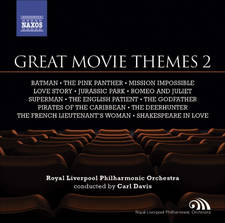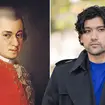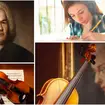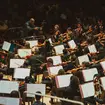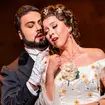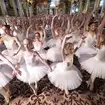Mozart Operas: 10 Of The Best
When the Canadian pianist Glenn Gould pronounced that Mozart ‘was a bad composer who died too late rather than too early’, he did so at a time when the great man was worshipped with almost holy reverence.
More recent efforts to separate the Mozart myth from reality have, if anything, underlined the genius of a creative artist who understood humanity in its infinite variety and was able to translate that understanding into music of profound invention. His finest stage works stand comparison to those of Shakespeare. He crafted new vocal pieces with specific singers in mind, accepting their strengths and weaknesses as significant shaping forces in the act of composition.
Mozart assimilated the essence of the existing models of music for stage and church, and raised them to new heights of inspiration. His early Italian operas and pieces for the German-speaking theatre rarely challenge existing conventions, but they set the ground for the mould-breaking works of his later years. Likewise, his Salzburg masses paved the way for the great sacred pieces of his Vienna years, the C minor Mass and Requiem among them.
In 1780, Mozart was asked to write a serious opera for the Munich court, a huge boost for an ambitious composer saddled with the duties of cathedral organist in Salzburg. Idomeneo only emerged during the scheduled rehearsal period. Mozart worked wonders with a duff libretto, editing it into dramatic shape and stepping beyond the bounds of Italian opera seria to explore aspects of character and emotional extremes. Five years later, the composer revolutionised Italian comic opera with The Marriage of Figaro, his first collaboration with a great librettist, Lorenzo da Ponte. The plot’s wild doings are balanced against a score of great formal balance and musical logic, allowing Mozart to span everything from the absurd to the sublime in music that perfectly complements da Ponte’s onstage business.
Two further da Ponte operas, and final masterpieces The Magic Flute and The Requiem contain everything necessary to contradict Glenn Gould’s perverse judgement on Mozart.
Idomeneo
Although Mozart complained of problems with Idomeneo’s first cast (describing the ageing Anton Raaff as being ‘like a statue’ in the title role), he created a breakthrough work. Loosening the strict formal conventions of opera seria, he reaches deep into the emotions of his mythical characters. Period instruments and wholehearted choral singing add bite to John Eliot Gardiner’s intense, characterful recording.
DG 431 6742
Don Giovanni
Da Ponte’s playboy exploits were ideal qualifications for his retelling of the yarn of Don Juan. Morally ambivalent, the opera presents the philandering nobleman of the title as both villain and hero. But in the end, he descends to hell while the remaining cast of cowards, rape victims and the violently bereaved live happily ever after. Carlo Maria Giulini’s classic 1959 recording features premier-league singing and revelatory conducting.
EMI Classics 567 8692
Così fan Tutte
Two soldiers, Ferrando and Guglielmo, bet that their girlfriends will always be faithful; philosopher Don Alfonso persuades them he can prove otherwise. So, in ridiculous disguises, the military men seek to trick Fiordiligi and Dorabella. Mozart explores the sincerity and hypocrisy of human relationships in his third and final da Ponte opera, the results of which are interpreted with unrestrained delight by Georg Solti, Renée Fleming and co.
Decca 444 1742
Die Entführung aus dem Serail
Some 99 years after the defeat of the Ottoman army at Vienna’s gates, Mozart composed a singspiel using the by now amusing stock characters of the Turkish pasha, his courtiers and harem. It was Die Entführung that inspired Emperor Joseph II’s alleged remark: ‘Too many notes, my dear Mozart.’ His opinion might have been different had he heard Charles Mackerras’s inspired reading of Mozart’s score.
Telarc CD-80544
Mass in C Minor, K427 (K417a)
As with his Requiem, Mozart never finished the longest of his 18 Latin Mass settings. The C minor Mass, first performed in Salzburg in October 1783, reflects Mozart’s discovery and assimilation of music by Bach, introducing ‘operatic’ arias into the rich musical mix. Nikolaus Harnoncourt spotlights the work’s arresting clash of old and new musical cultures in a compelling performance.
Warner Classics 2564 62337-2
The Marriage of Figaro
For many, this is the greatest opera ever written. The 29-year-old Mozart struck gold here, setting da Ponte’s words to music of profound humanity. Based on Beaumarchais’s play, the opera uses comedy and pathos to highlight aristocratic power, a hot topic on the eve of the French Revolution. René Jacobs conjures up a gripping performance, with spot-on casting and great sound.
Harmonia Mundi HMC 901818.20
Ave Verum Corpus, K618
This short motet, exquisitely tender and unashamedly devout, was written in June 1791 during a visit to the spa at Baden, near Vienna, where Constanze was ‘taking the cure’. Anton Stoll, Baden’s choirmaster and a close friend of the Mozarts, asked the composer to provide a short piece for the Sunday following the feast of Corpus Christi. Rich singing from the Leipzig Radio Choir and effortless phrasing distinguish Peter Schreier’s recording.
Philips Classics 464 7202
The Magic Flute
Italian opera was all the rage at Vienna’s court, but what the public craved was entertainment in German. Mozart gave them a masterpiece, scoring a huge hit into the bargain. The Magic Flute draws on Masonic imagery, folk idioms and pantomime to elevate human wisdom above ignorance. Within 10 weeks of its premiere, the composer was dead. This Ferenc Fricsay recording from Berlin may be more than 50 years old, but it remains unbeatable.
DG 459 4972
La Clemenza di Tito
Mozart’s penultimate opera, first performed in Prague in September 1791, enjoyed three decades of popularity before it disappeared from the repertory radar screen. It was the first Mozart opera produced in England: at the King’s Theatre Haymarket in 1806. From the early 1950s, La Clemenza gradually regained its former reputation. Based on groundbreaking productions in Zurich, Harnoncourt’s 1993 recording ranks among the best.
Warner Classics 2564 62331-2
Requiem, K626
Mozart knew he was suffering from a possibly fatal illness when he began work on his Requiem mass in October 1791. The anonymous commission seemed a bad omen, but Mozart cracked on and had drafted around half of the score (to the middle of the Lacrimosa) by the time of his death in December. Death’s drama and the mystery of eternal life are central to Harnoncourt’s full-blooded performance.
Deutsche Harmonia Mundi 82876 58705-2
